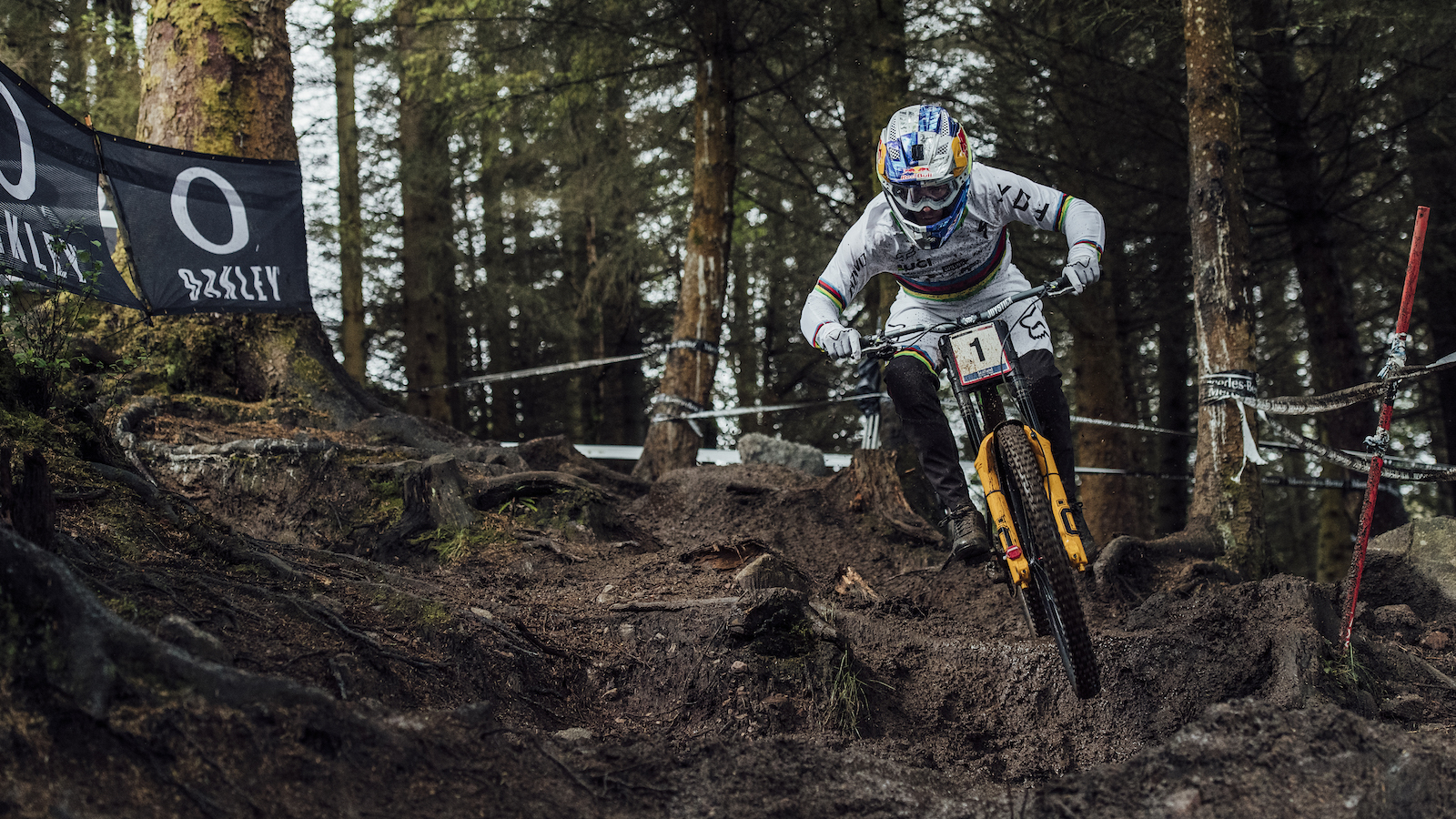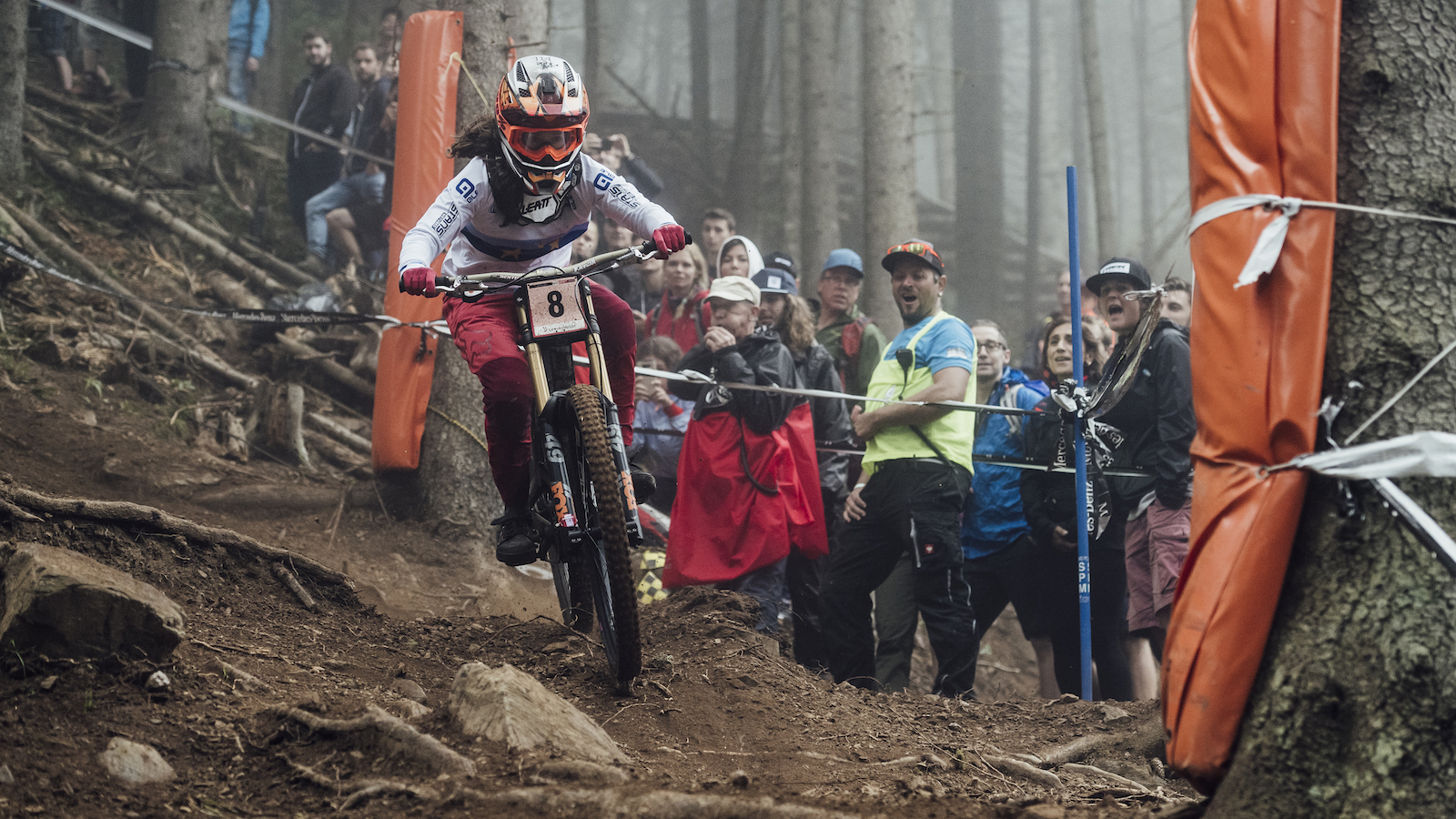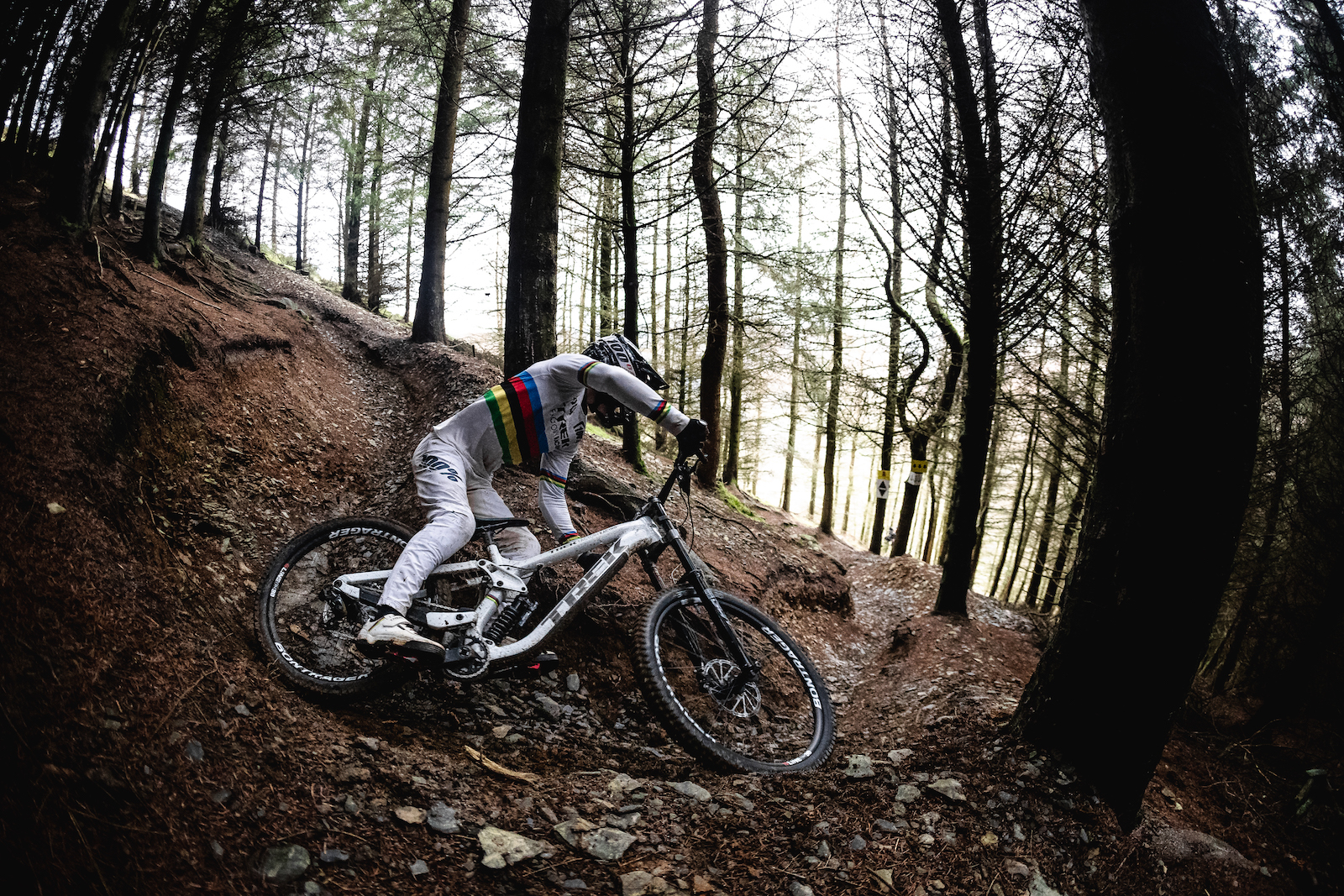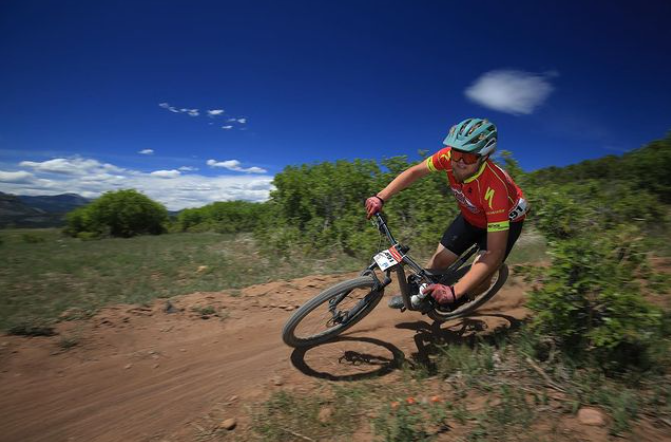Downhill mountain biking: everything you need to know
From huge jumps to full-face helmets, downhill mountain biking is one of the most adrenaline-filled segments of the sport

Downhill mountain biking is one of the most striking segments of the sport. From images of riders hitting huge jumps and crazy rock gardens to the full-face helmets and long-sleeve attire, the cool image of downhill is what attracts a lot of people to mountain biking.
Downhill riding is both a type of riding as well as an elite racing discipline. The scene ranges from professionally built tracks at lift-served bike parks to local trails that are accessed from a shuttle road.
The type of riding is defined, as the name suggests, on riding downhill. The equipment used is not designed to be pedaled uphill, so downhill riders usually get to the top of the hill via chair lift at a ski resort or from a shuttle vehicle.
Downhill trails and tracks are designed to be as challenging as possible. They will be high speed and feature both natural and man-made features. Natural features may include rock gardens, root beds, and off-camber sections. Trail builders will add mandatory jumps and drops to keep technicality high and the adrenaline flowing.
The equipment
The best downhill mountain bikes are the most aggressive types available, designed to tackle the toughest terrain at high speeds. For this reason, they feature large amounts of suspension travel, usually around 200mm both in the front and rear. The rear shock is usually a coil shock, and the fork is always a double-crown fork, like the Fox 40 or RockShox BoXXer.
Geometry on these bikes will be low and slack. As different wheel sizes entered the mountain bike market, downhill bikes still commonly used 26-inch wheels. But as bike design got more refined, racers began to realize the benefits of bigger hoops. Today, downhill bikes are available in both 29er and 27.5-inch wheel sizes with some racers also opting for a mullet wheel size setup (29 front, 27.5 rear).
The components on downhill bikes are designed to be as durable as possible. The brakes will be powerful and feature large rotors. Tires use heavy thick casings to get the most protection from sharp rocks possible and use aggressive tread patterns. For super wet conditions, tire manufacturers also create ultra-specific mud tires for downhill racing. Shimano and SRAM both make downhill-specific groupsets, which have a narrow gearing range and use short caged derailleurs to avoid damage.
Downhill riders always use the best full-face mountain bike helmets for the most protection possible. Safety gear such as knee pads, elbow pads, back protectors, and even neck braces are also common pieces of safety equipment. Downhillers will often wear long-sleeve jerseys and pants. While downhill kits started out baggy, many racers are realizing the aerodynamic benefits of more tightly fitting clothes, even though super-tight skinsuits are infamously banned from UCI racecourses.

The trails
Downhill trails are built to be extremely steep, challenging and fast. You can expect lots of gaps, jumps, drops, technical corners, and of course rocks and roots.
One of the main places to find downhill tracks is at ski resorts as they already have the facilities for riders to take the chair lift to the top of the hill. These bike parks have trails rated for all skill levels, so nearly anybody can go and progress their riding abilities.
The most famous bike park is located in Whistler, British Columbia, Canada. Trail builders in Whistler are considered the first to create the ski-resort bike park concept which has now spread across the world. A number of these bike parks, particularly the ones in Europe, are hosts to the Downhill World Cup race series. Most notably Les Get's, Leogang, Val de Sole, Fort William and Mont Saint Anne regularly host elite races and have been the stage for the best riders to compete against each other.
Downhill trails can also be found outside of designated parks. These however can be more challenging to access. If there is a road nearby, riders can use a vehicle to shuttle up to the top. Alternatively, riders can also hike up the hill since downhill bikes are not designed to be pedaled uphill.
Downhill trails are often very challenging, so it's always a good idea to take an easy lap down the trail to look at all the features before heading down at full speed.
Racing
Downhill mountain biking is one discipline of riding that's intrinsically related to racing. The most elite level of downhill racing is the UCI Downhill World Cup, which this year consists of four races in Europe and one in the United States. The concept is simple: the fastest person down the hill is the winner.
There is a winner for each race, but points are also accumulated over the series to crown an overall season winner. There is also a World Championships race, which is held separately from the rest of the World Cup season. The World Champion wears the rainbow stripes jersey for the next year, as in all cycling disciplines.
The current downhill World Champions are Reece Wilson and Camille Balanche, who were crowned last fall amid muddy conditions in Leogang, Austria. The 2021 World Cup season is about to start on 12 June, again at the Austrian venue. Of all the competitors, it will be South African Greg Minnaar who will look to add to his growing tally of wins. He currently holds the record for the most World Cup wins (23) and is considered one of the greatest downhill racers of all time.
Myriam Nicole is the top-ranked woman downhill racer currently. For years, Rachel Atherton was the woman to beat, but she is expecting a child so won't be racing this year. Young riders like Marine Cabirou, Nina Hoffmann, and Vali Holl will be looking to prove themselves on the podium.
For the men, Frenchmen Loic Bruni and Loris Vergier are nearly always on top of their game, but the field is deep with talent. Veteran racer Greg Minnaar proved last season that he still has race-winning talent. Another man from France, Amaury Pierron has won races in a dominating fashion in the past but is coming back from injury this year.
As with other race disciplines, there are amateur downhill races that anybody can enter held in locations all throughout the world. Most countries will have their own National series and Championship race which attract a mixture of professional and amateur racers.

How to ride downhill
The most obvious way to ride downhill is by going to a lift-served bike park, these bike parks usually have bikes and gear for rent and cater for all skill levels. Not everybody lives nearby a bike park though, which makes downhill a tricky discipline to get into.
The other option is using a shuttle vehicle or hiking to the top. Lots of areas have trails that are suitable for downhill riding, but the challenge is getting to the top.
Downhill bikes aren't great for climbing hills, and this is one reason why enduro mountain biking has become so popular. Enduro bikes combine great downhill suspension performance with a platform that's much easier to pedal up hills. Enduro bikes are very capable descenders, so they are great alternatives to downhill bikes.
You don't necessarily even need a downhill bike to ride downhill tracks. For example, the Enduro World Series race in Whistler uses some gnarly trails in the bike park, and the racers are setting fast times on enduro rigs.
With enduro bikes getting more and more capable, lots of riders are opting for the more versatile option. However, there are still downhill purists who can't give up the feeling of pure speed. In terms of descending capability, even the longest travel enduro bike will find it hard to compete with a downhill bike on a DH-specific trail. The uncompromised geometry, suspension systems and components make downhill bikes extremely stable and controlled on the roughest terrain
Ryan Simonovich has been riding and racing for nearly a decade. He got his start as a cross-country mountain bike racer in California, where he cultivated his love for riding all types of bikes. Ryan eventually gravitated toward enduro and downhill racing but has also been found in the occasional road and cyclo-cross events. Today, he regularly rides the trails of Durango, Colorado, and is aiming to make a career out of chronicling the sport of cycling.
Rides: Santa Cruz Hightower, Specialized Tarmac SL4

